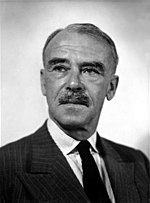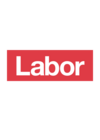Division of Casey
| Casey Australian House of Representatives Division | |
|---|---|
 Division of Casey in Victoria, as of the 2022 federal election | |
| Created | 1969 |
| MP | Aaron Violi |
| Party | Liberal |
| Namesake | Richard Casey |
| Electors | 114,385 (2022) |
| Area | 2,466 km2 (952.1 sq mi) |
| Demographic | Rural |
The Division of Casey is an Australian electoral division in the state of Victoria. The division was created in 1969 and is named for Richard Casey, who was Governor-General of Australia 1965–69.
The division is located in the outer eastern suburbs of Melbourne and extends into the Yarra Valley and Dandenong Ranges. It covers an area of approximately 2,466 square kilometres (952 sq mi). Major suburbs and towns include Belgrave, Belgrave Heights, Belgrave South, Chirnside Park, Coldstream, Dixons Creek, Don Valley, Ferny Creek, Gladysdale, Gruyere, Healesville, Hoddles Creek, Kallista, Kalorama, Kilsyth, Kilsyth South, Launching Place, Lilydale, Lysterfield, Menzies Creek, Millgrove, Monbulk, Montrose, Mooroolbark, Mount Evelyn, Mount Dandenong, Olinda, Powelltown, Reefton, Sassafras, Selby, Seville, Seville East, Silvan, Tecoma, Upwey, Wandin, Wandin East, Warburton, Wesburn, Woori Yallock, Yarra Glen, and Yellingbo.[1]
The current Member for Casey, since the 2022 federal election, is Aaron Violi, a member of the Liberal Party of Australia. His immediate predecessor is Tony Smith, who was Speaker of the House from 2015 through 2021, and was, after Bob Halverson, the second member for this electorate to occupy the chair.
Geography
[edit]Since 1984, federal electoral division boundaries in Australia have been determined at redistributions by a redistribution committee appointed by the Australian Electoral Commission. Redistributions occur for the boundaries of divisions in a particular state, and they occur every seven years, or sooner if a state's representation entitlement changes or when divisions of a state are malapportioned.[2]
History
[edit]
When it was created it was a highly marginal seat, and at the 1972 federal election it was regarded as the "litmus seat", which the Australian Labor Party had to win to gain government. Lost when the Liberals won in 1975, Labor picked it up again when Labor regained government in 1983. However, a redistribution ahead of the following year's election made Casey marginally Liberal. The Liberals retook the seat in that election and have held it since then. Demographic changes have also contributed in making Casey a fairly safe seat for the Liberal Party, although a redistribution ahead of the 2013 federal election pushed the seat further north into the upper Yarra Valley, estimated to halve the Liberal two-party preferred majority of 4.2 per cent.[3] Since the 2023 Aston by-election, it is the Liberal Party’s safest seat in metropolitan Melbourne.
Prominent members to have represented Casey include Peter Howson, who served as a minister in the McMahon government; Bob Halverson, who was Speaker of the House of Representatives 1996–98; Michael Wooldridge, who served as Minister for Health in the first five years of the Howard government (1996–2001); and Tony Smith, Speaker from 2015 until 2021.[3]
Members
[edit]| Image | Member | Party | Term | Notes | |
|---|---|---|---|---|---|

|
Peter Howson (1919–2009) |
Liberal | 25 October 1969 – 2 December 1972 |
Previously held the Division of Fawkner. Served as minister under McMahon. Lost seat | |

|
Race Mathews (1935–) |
Labor | 2 December 1972 – 13 December 1975 |
Lost seat. Later elected to the Victorian Legislative Assembly seat of Oakleigh in 1979 | |

|
Peter Falconer (1943–) |
Liberal | 13 December 1975 – 5 March 1983 |
Lost seat | |

|
Peter Steedman (1941–) |
Labor | 5 March 1983 – 1 December 1984 |
Lost seat | |

|
Bob Halverson (1937–2016) |
Liberal | 1 December 1984 – 31 August 1998 |
Served as Speaker during the Howard Government. Retired | |

|
Michael Wooldridge (1956–) |
3 October 1998 – 8 October 2001 |
Previously held the Division of Chisholm. Served as minister under Howard. Retired | ||

|
Tony Smith (1967–) |
10 November 2001 – 11 April 2022 |
Served as Speaker during the Abbott, Turnbull and Morrison Governments. Retired | ||

|
Aaron Violi (1984–) |
21 May 2022 – present |
Incumbent |
Election results
[edit]| Party | Candidate | Votes | % | ±% | |
|---|---|---|---|---|---|
| Liberal | Aaron Violi | 36,347 | 36.49 | −8.74 | |
| Labor | Bill Brindle | 24,779 | 24.87 | −3.78 | |
| Greens | Jenny Game | 12,894 | 12.94 | +1.99 | |
| Independent | Claire Ferres Miles | 8,307 | 8.34 | +8.34 | |
| United Australia | Anthony Bellve | 4,834 | 4.85 | +2.24 | |
| Independent Australia One | Craig Cole | 3,455 | 3.47 | +3.47 | |
| One Nation | Paul Murphy | 3,260 | 3.27 | +3.23 | |
| Liberal Democrats | Trevor Smith | 2,008 | 2.02 | +2.02 | |
| Animal Justice | Andrew Klop | 1,844 | 1.85 | −1.23 | |
| Justice | Peter Sullivan | 1,207 | 1.21 | −2.11 | |
| Federation | Chris Field | 686 | 0.69 | +0.69 | |
| Total formal votes | 99,621 | 93.74 | +0.18 | ||
| Informal votes | 6,652 | 6.26 | −0.18 | ||
| Turnout | 106,273 | 93.00 | −2.52 | ||
| Two-party-preferred result | |||||
| Liberal | Aaron Violi | 51,283 | 51.48 | −3.14 | |
| Labor | Bill Brindle | 48,338 | 48.52 | +3.14 | |
| Liberal hold | Swing | −3.14 | |||

 indicates at what stage the winning candidate had over 50% of the votes and was declared the winner.
indicates at what stage the winning candidate had over 50% of the votes and was declared the winner.References
[edit]- ^ "Profile of the electoral division of Casey (Vic)". Australian Electoral Commission. 26 September 2013. Archived from the original on 2 December 2013. Retrieved 25 November 2013.
- ^ Muller, Damon (14 November 2017). "The process of federal redistributions: a quick guide". Parliament of Australia. Retrieved 19 April 2022.
- ^ a b Green, Antony (11 October 2013). "Federal election 2013: Casey results". ABC. Australia. Retrieved 25 November 2013.
- ^ Casey, VIC, 2022 Tally Room, Australian Electoral Commission.
